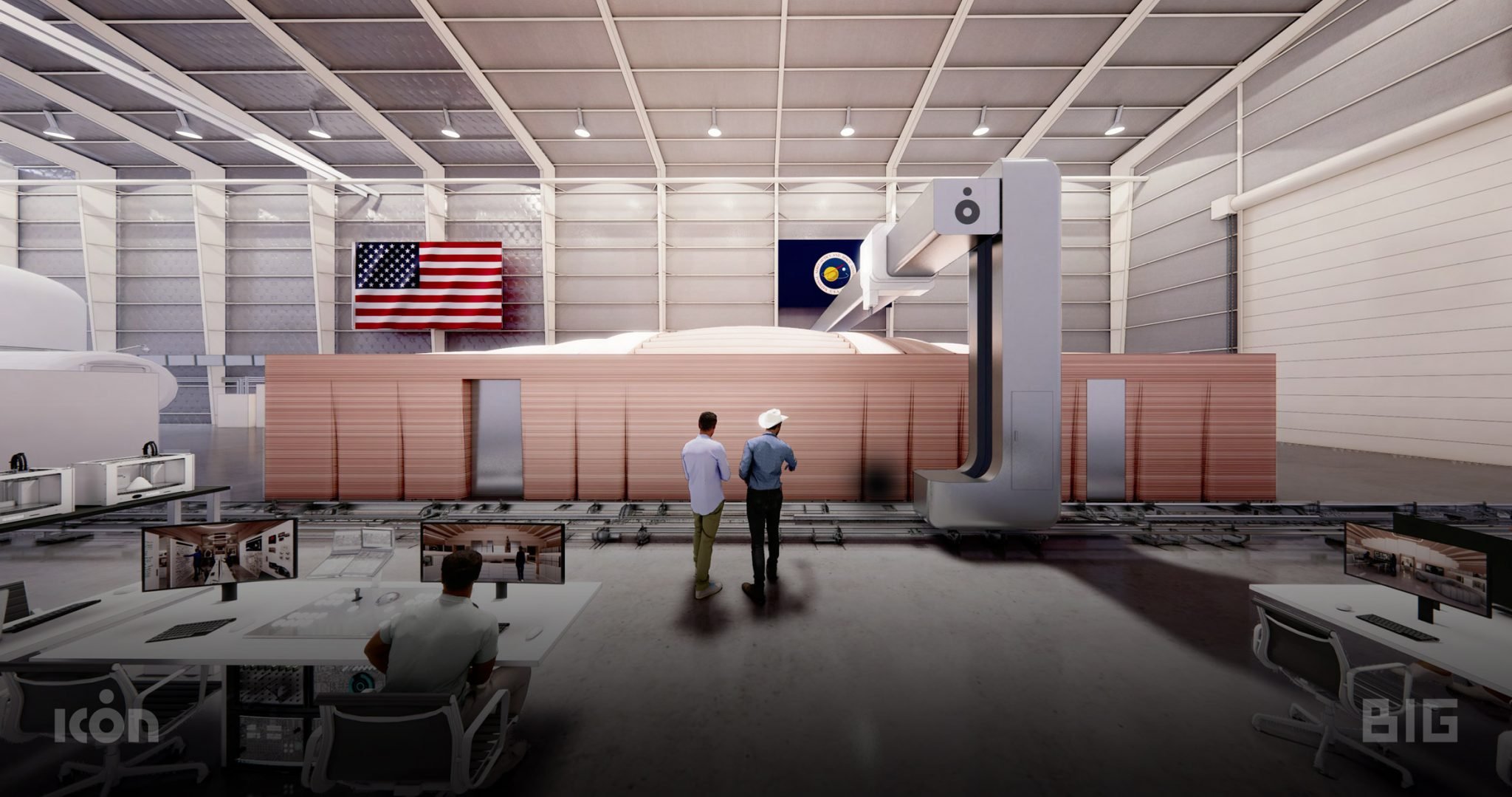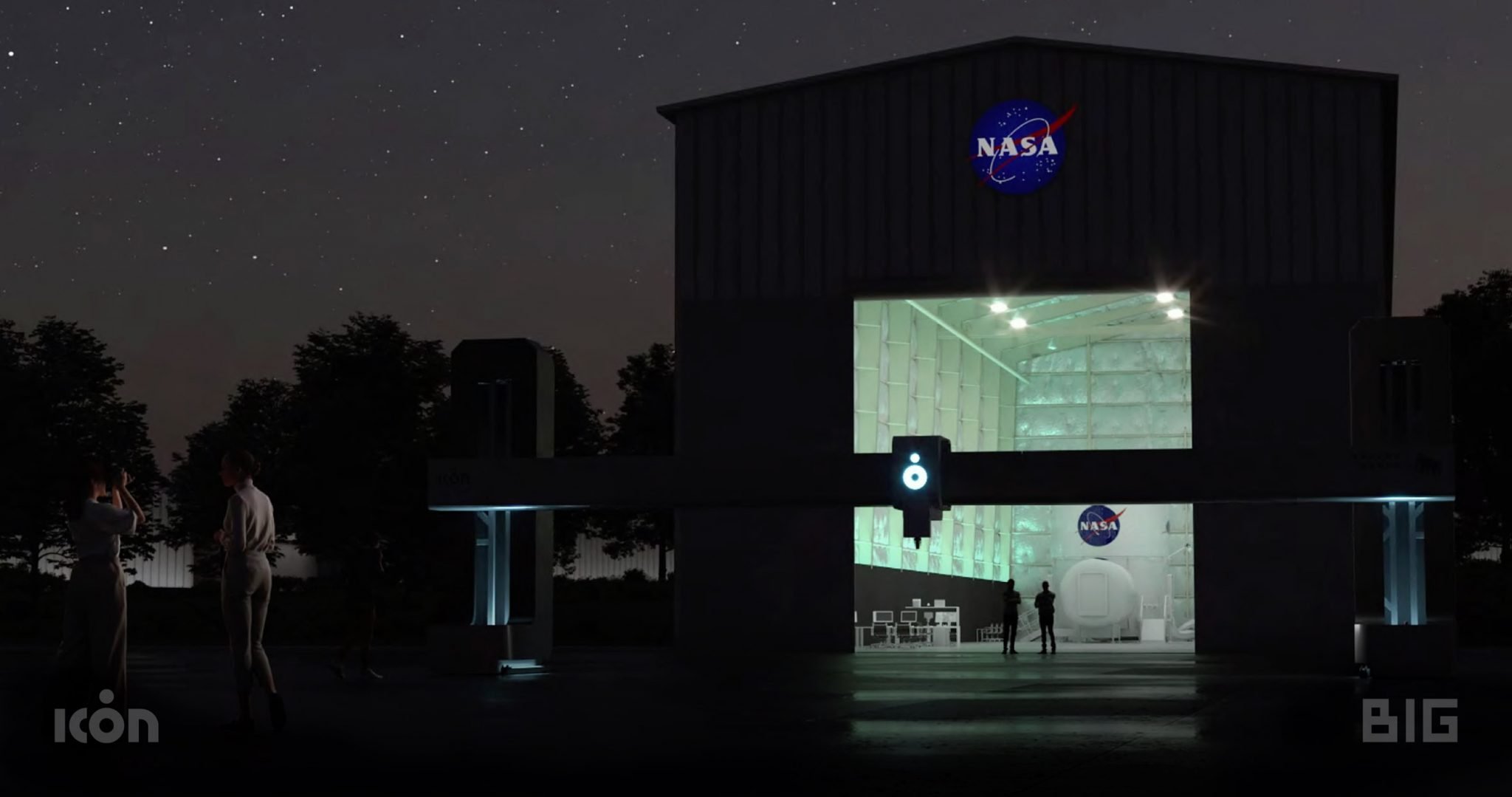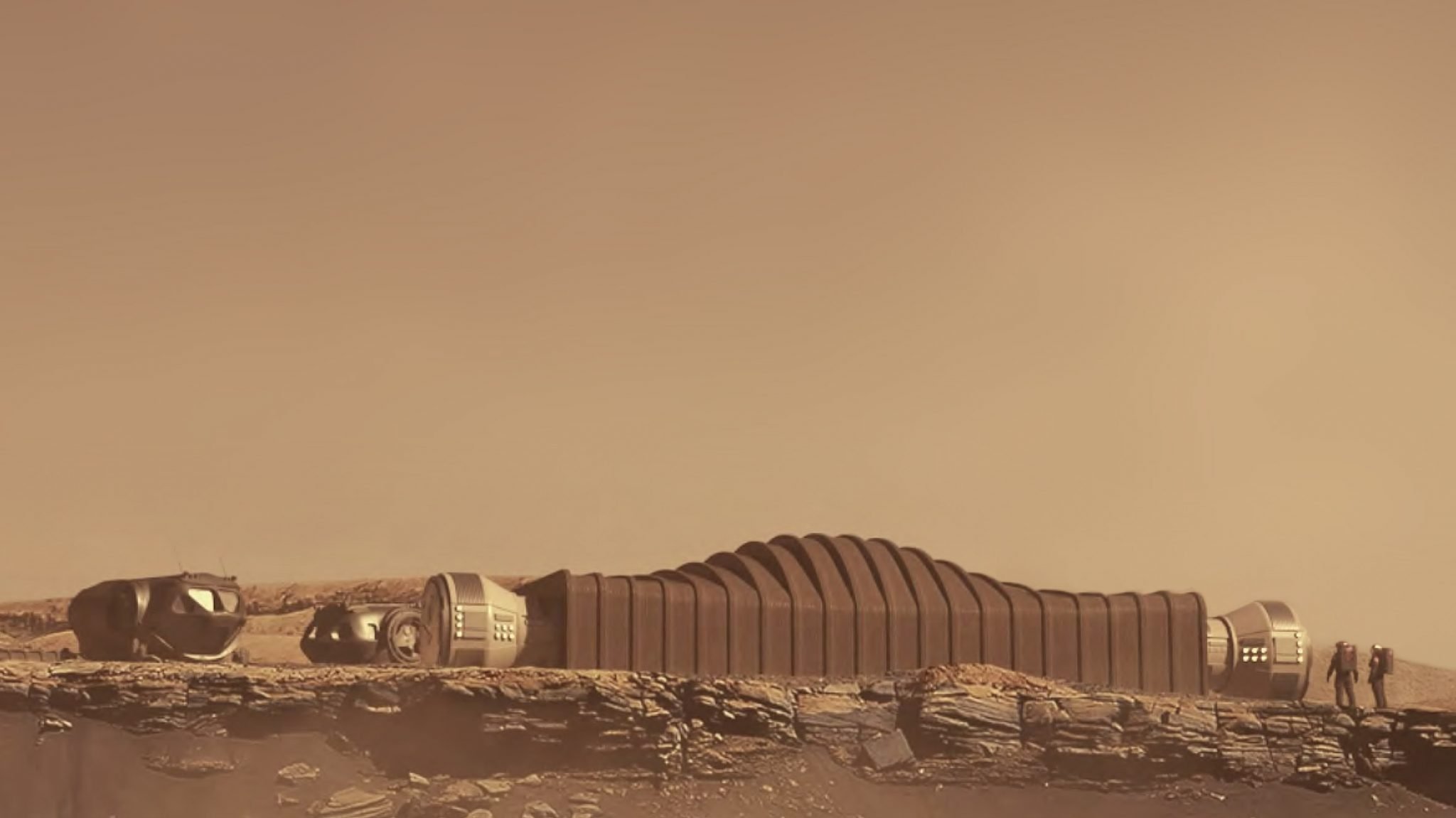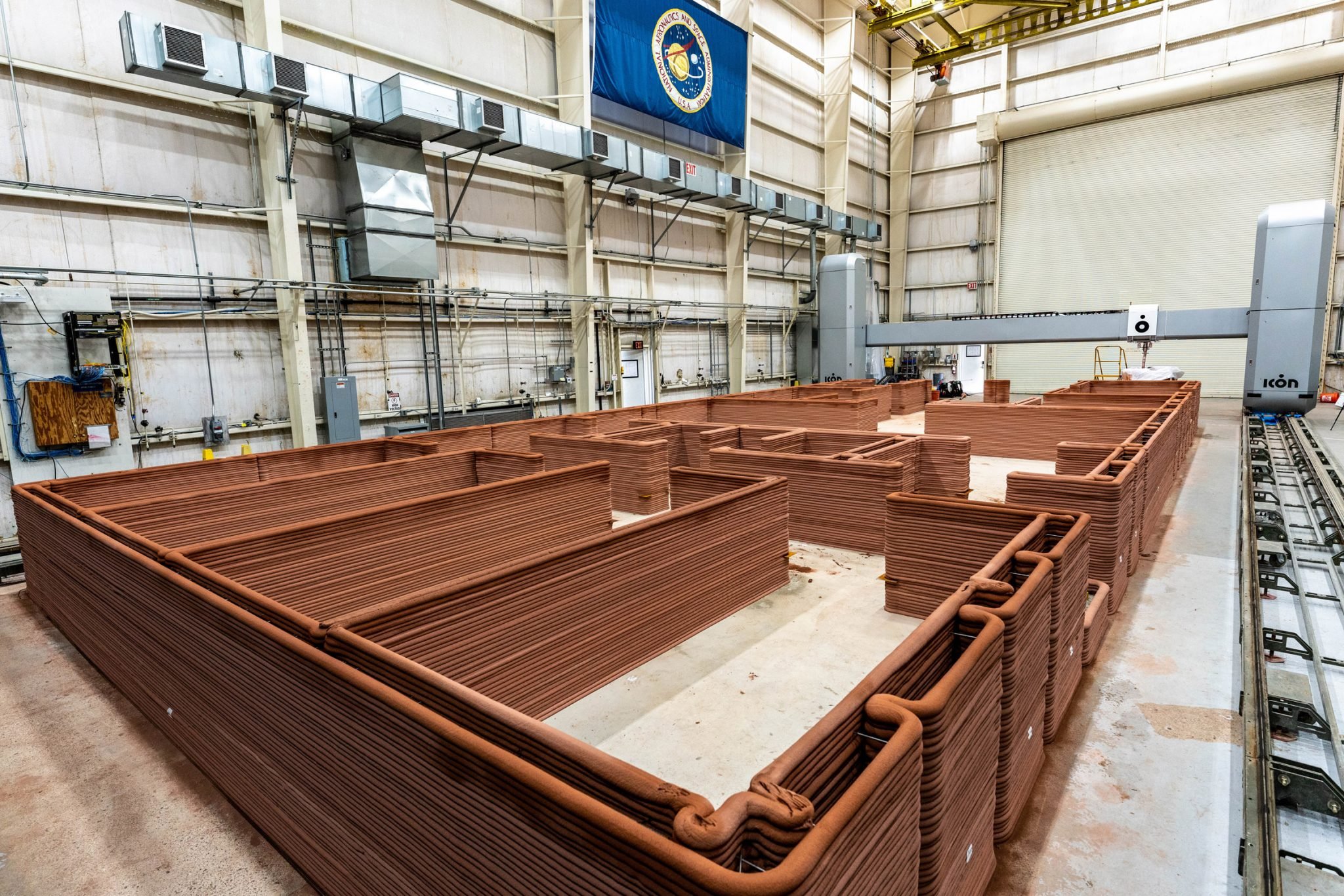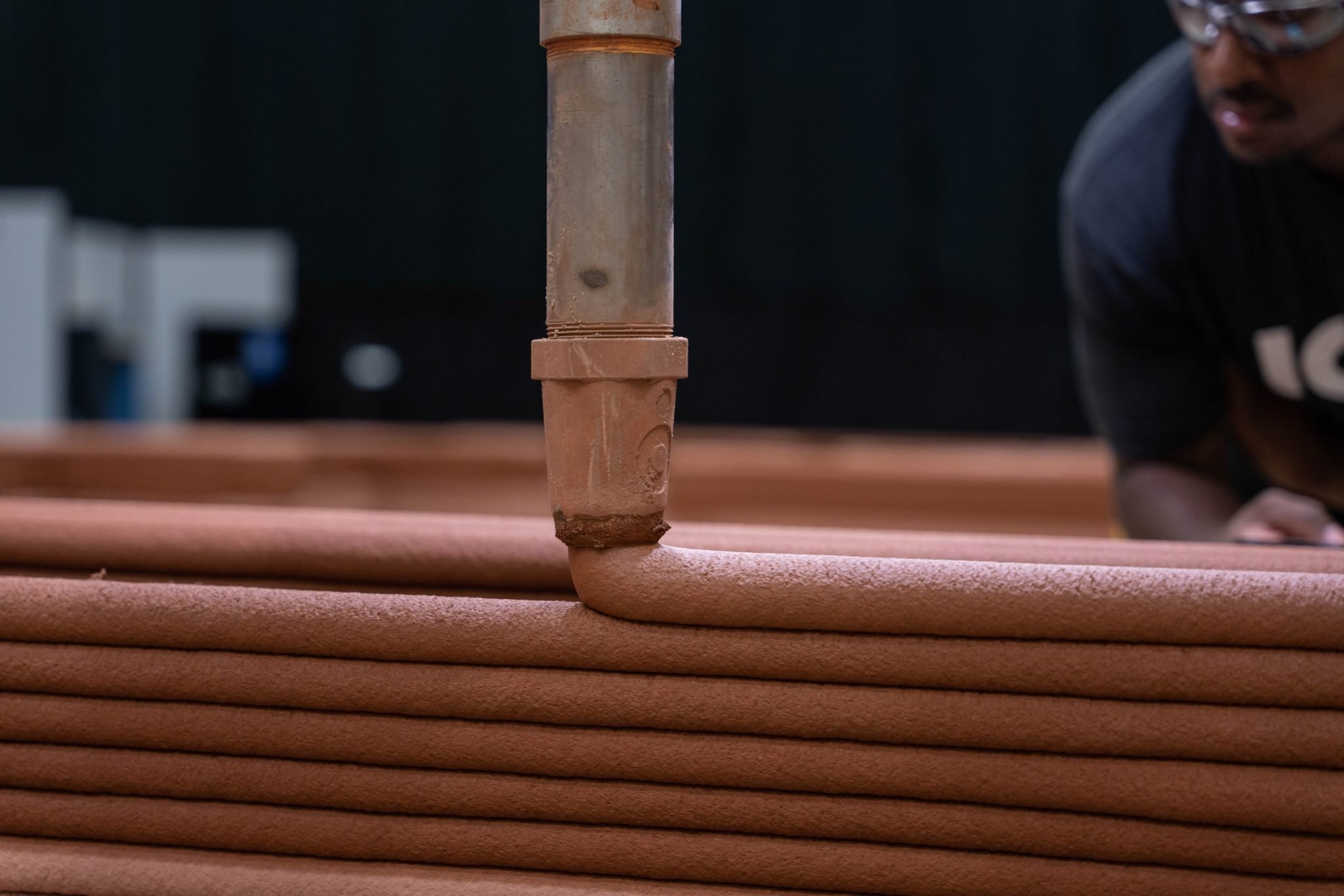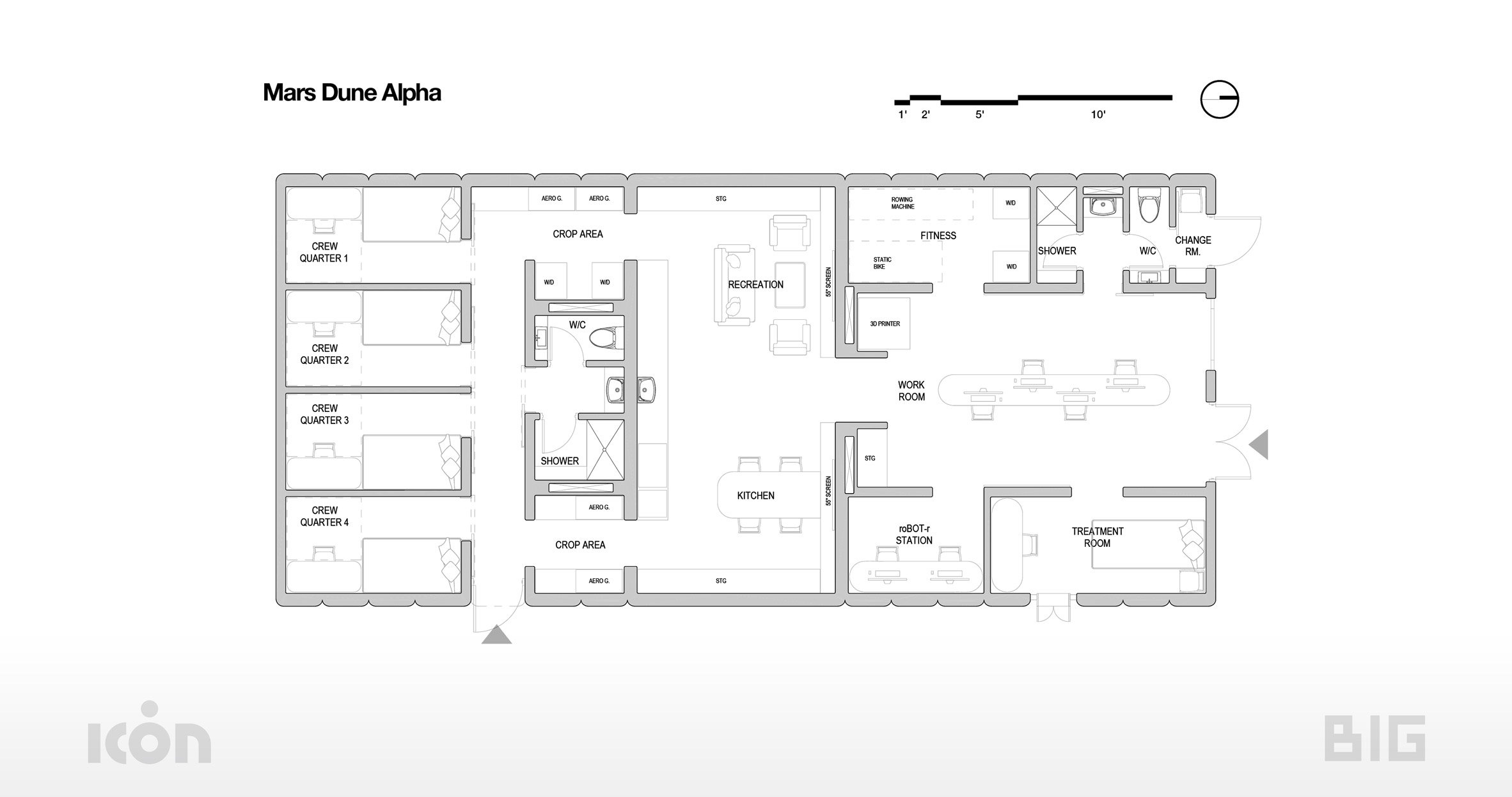“This is the highest-fidelity simulated habitat ever constructed by humans,”
Jason Ballard.
Bjarke Ingels Group (BIG) collaborates with both construction technologies company ICON and NASA to create a 3D-printed structure that simulates human life on Mars. The structure, called Mars Dune Alpha, is currently under construction at NASA’s Johnson Space Center in Texas, USA.
“Mars Dune Alpha is intended to serve a very specific purpose, to prepare humans to live on another planet. We wanted to develop the most faithful analog possible to aid in humanity’s dream to expand into the stars,” said ICON co-founder Jason Ballard.
Photography by ICON
The design and thoughtful details by BIG and ICON for the 3D-printed structure aim to create a safe and comfortable environment for its inhabitants regarding both their mental and physical health. The 158 square meter Mars Dune Alpha comprises private quarters for four crew members, shared living spaces in the center of the habitat, and medical and food-growing stations.
“Varying ceiling heights vertically segmented by an arching shell structure accentuate the unique experience of each area to avoid spatial monotony and crewmember fatigue.” stated the ICON team.
Photography by ICON
BIG also ensured spaces can be personalized for an ultimate users’ experience—rooms have customizable lighting, temperature, and sound. Moreover, movable furniture will be incorporated allowing users to organize their space as they wish.
“Together with NASA and ICON, we are investigating what humanity’s home on another planet will entail from the human experience,” BIG founder Bjarke Ingels said.
Mars Dune Alpha is designed to house four people for extended periods of time and under harsh conditions similar to The Red Planet. The simulation of these conditions and the long-term experiment will help NASA be aware of the possible physical and mental challenges that might affect the crew on a long-term space mission and work on mitigating these challenges.
“Together with NASA and ICON, BIG is investigating what humanity’s home on another planet will entail from the human experience which will potentially lay the foundation for a new Martian vernacular,” said BIG’s Kai-Uwe Bergmann.
Photography by ICON
Since 3D printing technology has been practical and effective in constructing extraterrestrial habitats, this is how Mars Dune Alpha will be built. ICON is using its Vulcan 3D printing technology that uses the company’s own Portland Cement-based mix called Lavacrete.
Photography by ICON
“3D printing the habitat has further illustrated to us that construction-scale 3D printing is an essential part of humanity’s toolkit on earth and to go to the moon and Mars to stay,” Ballard added.
“The data gained from this habitat research will directly inform NASA’s standards for long-duration exploration missions, and as such will potentially lay the foundation for a new Martian vernacular. Mars Dune Alpha will take us one step closer to becoming a multi-planetary species.”
Mars Dune Alpha is part of NASA’s Space Technology Mission Directorate (STMD), which is part of The Crew Health and Performance Exploration Analog (CHAPEA). CHAPEA is a series of three experiments, each runs for yearlong at the NASA Jonson Space Center in Houston to simulate life in space and provide insights for future space missions.
NASA is now calling for crew for Mars Dune Alpha’s mission study which will start in Autumn 2022. The mission will include simulations of challenges that might be faced on Mars, including equipment failure and communication delays.
Award-winning architecture firms have been experimenting with space architecture as means of exploring other forms of life—recently, Skidmore, Owings & Merrill (SOM) proposed its vision of Space Architecture through the Moon Village project in the 17th International Architecture Exhibition of Venice Biennale.
Photography by ICON
Photography by ICON
Photography by ICON
Photography by ICON
Photography by ICON
Photography by ICON


